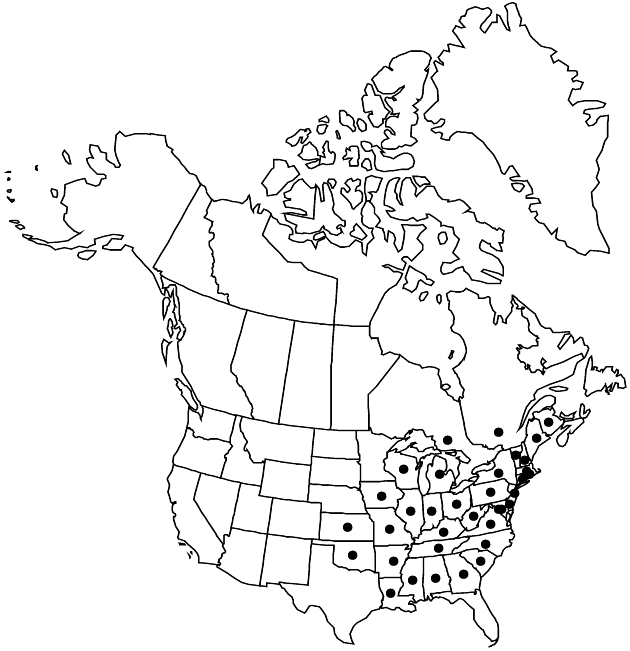Helianthus decapetalus
Sp. Pl. 2: 905. 1753.
Perennials, 60–200 cm (rhizomatous). Stems erect, glabrous. Leaves cauline; opposite (proximal or all) or alternate (distal); petioles (1–) 2–5 cm; blades (green, 3-nerved distal to bases) lanceolate to ovate, 7–21 × 4–10 cm, bases rounded to cuneate (often shortly decurrent onto petioles), margins usually serrate (moderately to notably in larger leaves), abaxial faces ± scabro-hispidulous, relatively sparsely glanddotted. Heads 3–6 (–10). Peduncles 2–12 cm (not glanddotted). Involucres hemispheric, 12–25 mm diam. Phyllaries 20–25 (often reflexed), lance-linear to lanceolate, 11–16 × 2–3 mm (sometimes leaflike, longest surpassing discs by 1/2+ their lengths), (margins ciliate) apices attenuate, abaxial faces strigillose to glabrate, not glanddotted. Paleae 8–10 mm, 3-toothed. Ray-florets 8–12; laminae 20–25 mm. Disc-florets 40+; corollas 6.5–7.2 mm, lobes yellow; anthers usually dark-brown to black (rarely reddish-brown), appendages dark or reddish-brown. Cypselae 3.5–5 mm; pappi of 2 aristate scales 3–4 mm. 2n = 34, 68.
Phenology: Flowering summer–fall.
Habitat: Mesic to wet woodland edges
Elevation: 10–1200 m
Distribution

N.B., Ont., Que., Ala., Ark., Conn., Del., D.C., Ga., Ill., Ind., Iowa, Ky., La., Maine, Md., Mass., Mich., Miss., Mo., N.H., N.J., N.Y., N.C., Ohio, Okla., Pa., R.I., S.C., Tenn., Vt., Va., W.Va., Wis.
Discussion
Helianthus decapetalus is sometimes confused with Heliopsis helianthoides because of shared habitats and superficial similarities. The tetraploid cytotype of H. decapetalus intergrades (and apparently hybridizes) with H. strumosus, particularly in the southern Appalachians; individual specimens can be difficult to place in one or the other species. In addition to morphologic differences, H. decapetalus usually occurs in more mesic habitats, particularly along watercourses; H. strumosus is found in drier sites such as roadside slopes. Helianthus ×multiflorus Linnaeus is a sterile hybrid, often with “doubled” heads (in which disc florets are replaced by ray florets); it is cultivated and is sometimes included within H. decapetalus, e.g., H. decapetalus var. multiflorus (Linnaeus) A. Gray; its parents are H. decapetalus and H. annuus.
Selected References
None.